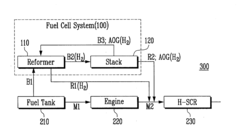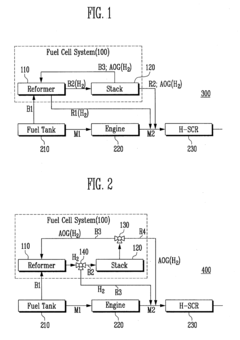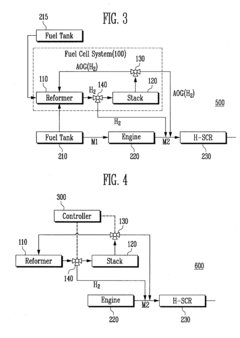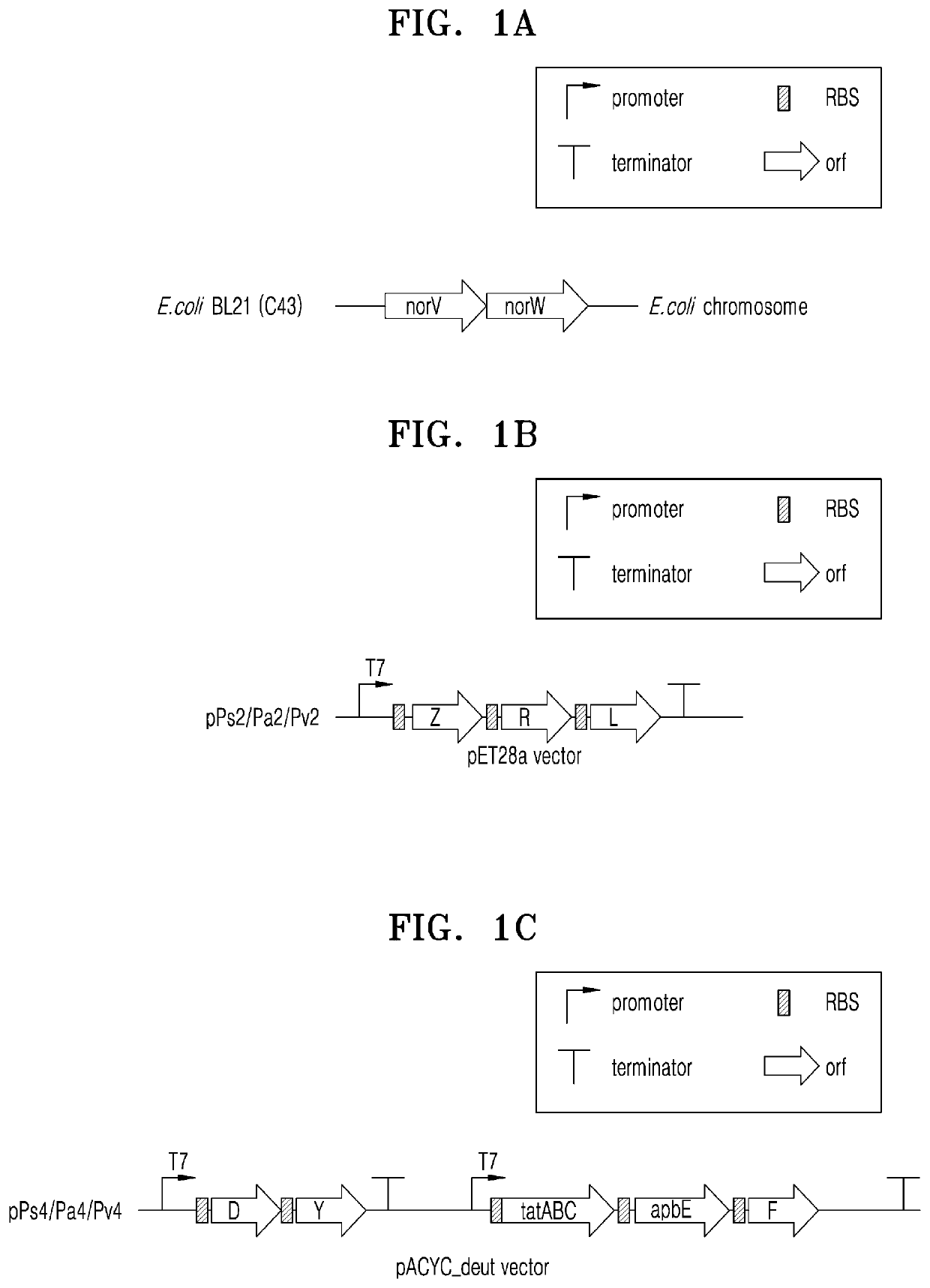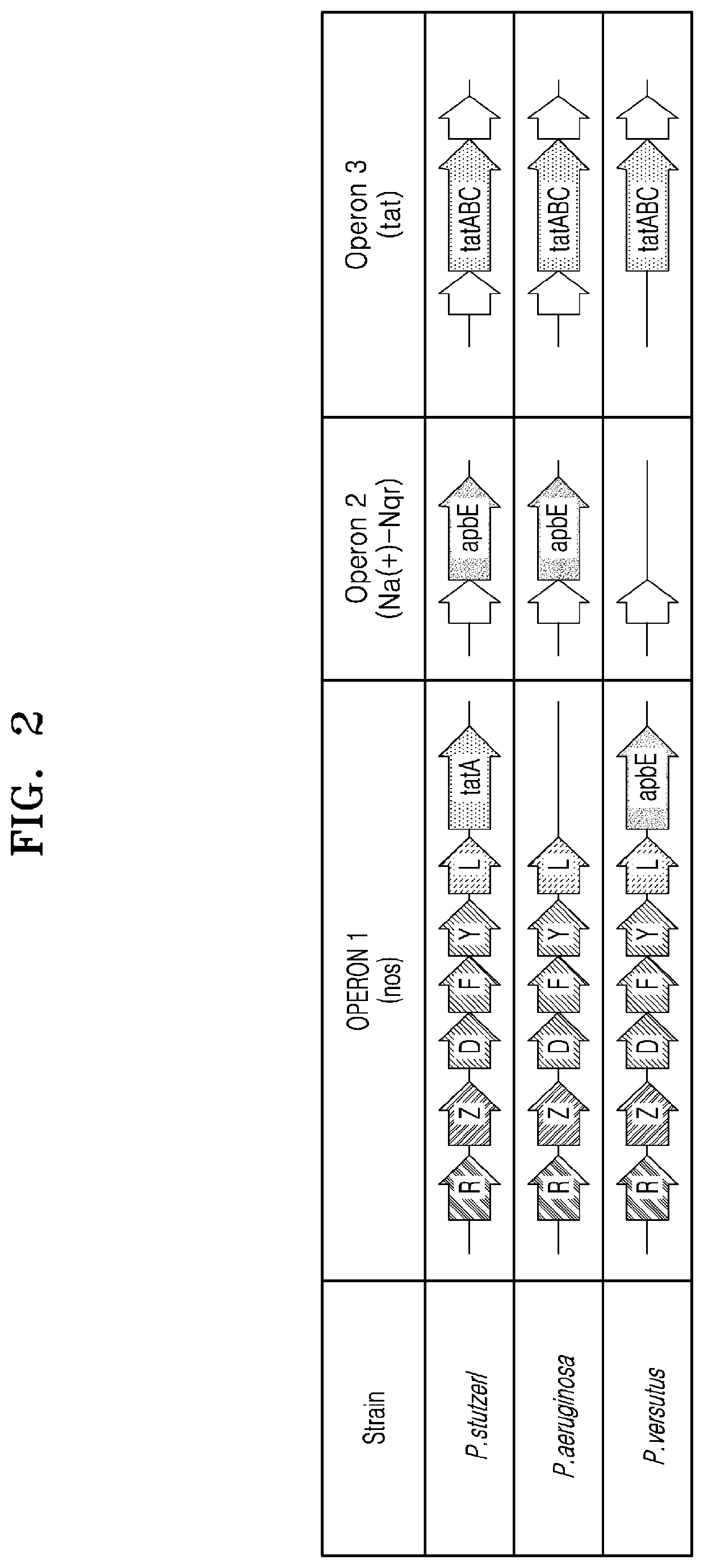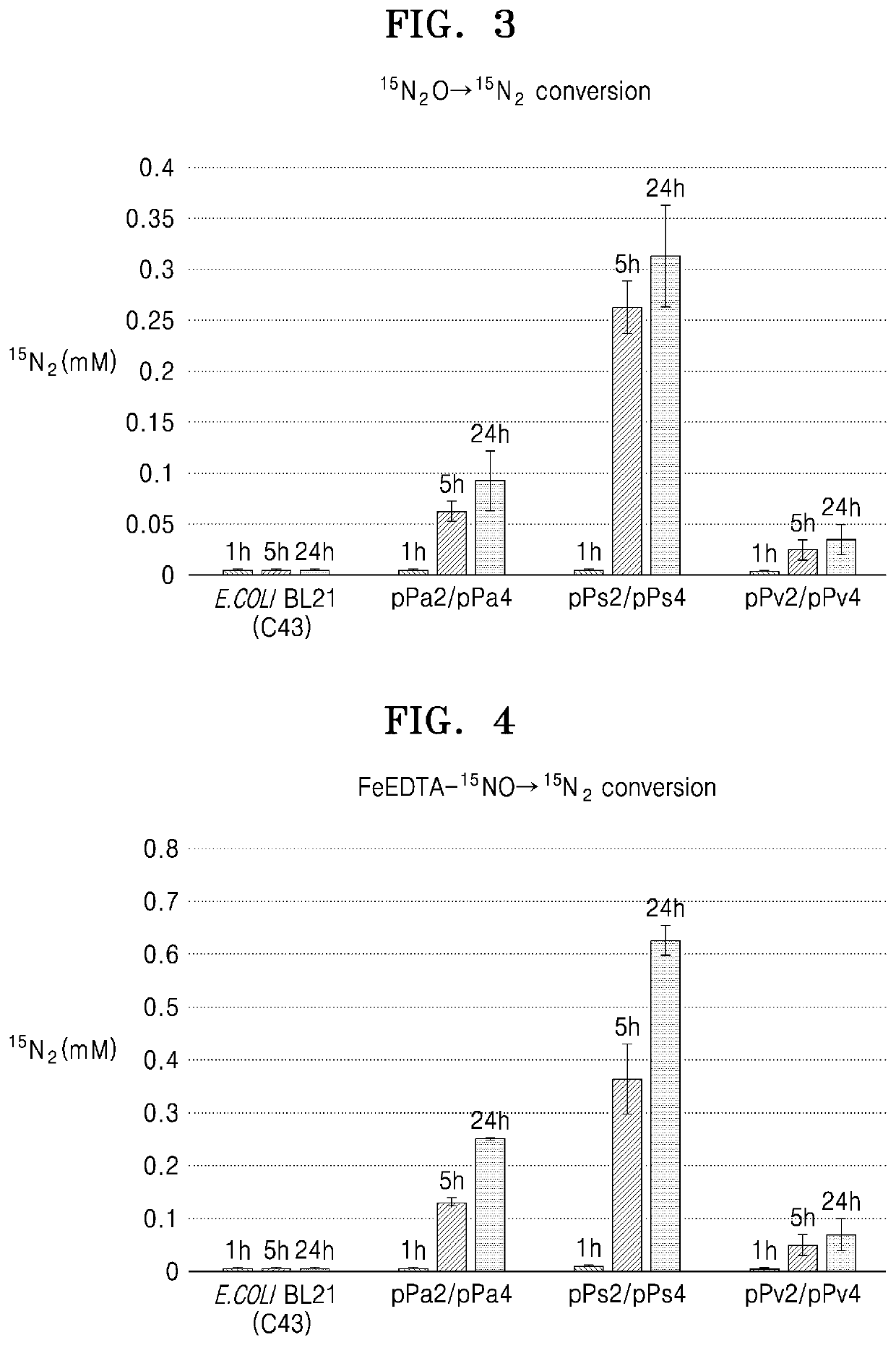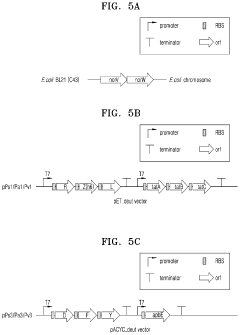Exploring the Synergy Between Nitrous Acid and Other Airborne Pollutants
AUG 4, 20259 MIN READ
Generate Your Research Report Instantly with AI Agent
Patsnap Eureka helps you evaluate technical feasibility & market potential.
HONO Pollution Synergy Background and Objectives
Nitrous acid (HONO) has emerged as a critical component in atmospheric chemistry, playing a significant role in air pollution and its associated health and environmental impacts. The exploration of synergies between HONO and other airborne pollutants has become increasingly important in recent years, as researchers and policymakers seek to understand the complex interactions within our atmosphere and their consequences for air quality management.
The historical context of HONO research dates back to the 1970s when it was first identified as a crucial intermediate in photochemical smog formation. Since then, our understanding of its role in atmospheric processes has evolved substantially. HONO is now recognized as a major source of hydroxyl radicals (OH), which are key drivers of daytime atmospheric oxidation processes and play a central role in the formation of secondary pollutants such as ozone and particulate matter.
The synergistic effects between HONO and other pollutants have gained attention due to their potential to exacerbate air quality issues beyond what individual pollutants might cause independently. These interactions can lead to non-linear effects in pollution formation and persistence, making air quality prediction and management more challenging. Understanding these synergies is crucial for developing more effective strategies to combat air pollution and mitigate its impacts on human health and the environment.
The primary objective of exploring the synergy between HONO and other airborne pollutants is to elucidate the mechanisms by which these interactions occur and their implications for atmospheric chemistry and air quality. This includes investigating how HONO formation and degradation are influenced by the presence of other pollutants, such as nitrogen oxides (NOx), volatile organic compounds (VOCs), and particulate matter.
Additionally, this research aims to quantify the impact of these synergistic effects on overall air quality, including the formation of secondary pollutants and the persistence of pollution events. By understanding these complex relationships, scientists and policymakers can develop more accurate air quality models and design more effective pollution control strategies.
Another key objective is to identify potential feedback loops and amplification effects that may arise from the interaction between HONO and other pollutants. This knowledge is crucial for predicting and mitigating severe pollution episodes, particularly in urban environments where multiple pollutant sources coexist.
Furthermore, this exploration seeks to uncover potential opportunities for targeted interventions that could disrupt harmful synergies or leverage beneficial interactions to improve air quality more efficiently. By focusing on the interplay between HONO and other pollutants, researchers hope to identify novel approaches to air quality management that go beyond traditional single-pollutant control measures.
The historical context of HONO research dates back to the 1970s when it was first identified as a crucial intermediate in photochemical smog formation. Since then, our understanding of its role in atmospheric processes has evolved substantially. HONO is now recognized as a major source of hydroxyl radicals (OH), which are key drivers of daytime atmospheric oxidation processes and play a central role in the formation of secondary pollutants such as ozone and particulate matter.
The synergistic effects between HONO and other pollutants have gained attention due to their potential to exacerbate air quality issues beyond what individual pollutants might cause independently. These interactions can lead to non-linear effects in pollution formation and persistence, making air quality prediction and management more challenging. Understanding these synergies is crucial for developing more effective strategies to combat air pollution and mitigate its impacts on human health and the environment.
The primary objective of exploring the synergy between HONO and other airborne pollutants is to elucidate the mechanisms by which these interactions occur and their implications for atmospheric chemistry and air quality. This includes investigating how HONO formation and degradation are influenced by the presence of other pollutants, such as nitrogen oxides (NOx), volatile organic compounds (VOCs), and particulate matter.
Additionally, this research aims to quantify the impact of these synergistic effects on overall air quality, including the formation of secondary pollutants and the persistence of pollution events. By understanding these complex relationships, scientists and policymakers can develop more accurate air quality models and design more effective pollution control strategies.
Another key objective is to identify potential feedback loops and amplification effects that may arise from the interaction between HONO and other pollutants. This knowledge is crucial for predicting and mitigating severe pollution episodes, particularly in urban environments where multiple pollutant sources coexist.
Furthermore, this exploration seeks to uncover potential opportunities for targeted interventions that could disrupt harmful synergies or leverage beneficial interactions to improve air quality more efficiently. By focusing on the interplay between HONO and other pollutants, researchers hope to identify novel approaches to air quality management that go beyond traditional single-pollutant control measures.
Market Analysis for Air Quality Monitoring Solutions
The air quality monitoring solutions market has experienced significant growth in recent years, driven by increasing awareness of the health impacts of air pollution and stricter environmental regulations worldwide. This market encompasses a wide range of products and services, including sensors, analyzers, software platforms, and data management systems designed to measure and monitor various airborne pollutants, including nitrous acid and its interactions with other contaminants.
The global air quality monitoring market was valued at approximately $4.3 billion in 2020 and is projected to reach $6.5 billion by 2025, growing at a compound annual growth rate (CAGR) of 8.5%. This growth is fueled by several factors, including urbanization, industrialization, and the rising prevalence of respiratory diseases. Governments and environmental agencies are increasingly mandating the implementation of air quality monitoring systems, further driving market demand.
In the context of exploring the synergy between nitrous acid and other airborne pollutants, there is a growing need for advanced monitoring solutions capable of detecting and analyzing complex interactions between multiple pollutants. This presents a significant opportunity for companies developing multi-parameter monitoring systems or those specializing in data analytics and modeling of atmospheric chemistry.
The market for air quality monitoring solutions is segmented by product type, pollutant, end-user, and region. Outdoor air quality monitors currently dominate the market, accounting for about 60% of the total market share. However, indoor air quality monitoring is expected to grow at a faster rate due to increasing awareness of indoor air pollution and its health impacts.
Key end-users of air quality monitoring solutions include government agencies, academic and research institutions, commercial and residential sectors, and industrial facilities. The government sector remains the largest end-user, driven by regulatory requirements and public health initiatives. However, the industrial sector is expected to show the highest growth rate as companies seek to comply with emissions standards and improve workplace safety.
Geographically, North America and Europe currently lead the market due to stringent air quality regulations and high adoption rates of advanced monitoring technologies. However, the Asia-Pacific region is expected to witness the fastest growth, driven by rapid industrialization, increasing urbanization, and growing environmental concerns in countries like China and India.
The competitive landscape of the air quality monitoring market is characterized by the presence of both established players and innovative startups. Key market players include Thermo Fisher Scientific, Siemens AG, Emerson Electric Co., and Honeywell International Inc. These companies are investing heavily in research and development to enhance their product offerings and maintain their competitive edge in the market.
The global air quality monitoring market was valued at approximately $4.3 billion in 2020 and is projected to reach $6.5 billion by 2025, growing at a compound annual growth rate (CAGR) of 8.5%. This growth is fueled by several factors, including urbanization, industrialization, and the rising prevalence of respiratory diseases. Governments and environmental agencies are increasingly mandating the implementation of air quality monitoring systems, further driving market demand.
In the context of exploring the synergy between nitrous acid and other airborne pollutants, there is a growing need for advanced monitoring solutions capable of detecting and analyzing complex interactions between multiple pollutants. This presents a significant opportunity for companies developing multi-parameter monitoring systems or those specializing in data analytics and modeling of atmospheric chemistry.
The market for air quality monitoring solutions is segmented by product type, pollutant, end-user, and region. Outdoor air quality monitors currently dominate the market, accounting for about 60% of the total market share. However, indoor air quality monitoring is expected to grow at a faster rate due to increasing awareness of indoor air pollution and its health impacts.
Key end-users of air quality monitoring solutions include government agencies, academic and research institutions, commercial and residential sectors, and industrial facilities. The government sector remains the largest end-user, driven by regulatory requirements and public health initiatives. However, the industrial sector is expected to show the highest growth rate as companies seek to comply with emissions standards and improve workplace safety.
Geographically, North America and Europe currently lead the market due to stringent air quality regulations and high adoption rates of advanced monitoring technologies. However, the Asia-Pacific region is expected to witness the fastest growth, driven by rapid industrialization, increasing urbanization, and growing environmental concerns in countries like China and India.
The competitive landscape of the air quality monitoring market is characterized by the presence of both established players and innovative startups. Key market players include Thermo Fisher Scientific, Siemens AG, Emerson Electric Co., and Honeywell International Inc. These companies are investing heavily in research and development to enhance their product offerings and maintain their competitive edge in the market.
Current Challenges in HONO and Pollutant Interactions
The interaction between nitrous acid (HONO) and other airborne pollutants presents significant challenges in atmospheric chemistry research. One of the primary difficulties lies in accurately measuring HONO concentrations in complex atmospheric environments. Traditional measurement techniques often struggle to distinguish HONO from other nitrogen-containing compounds, leading to potential overestimation or underestimation of its presence.
Furthermore, the rapid photolysis of HONO in sunlight complicates the understanding of its role in atmospheric processes. This photochemical instability makes it challenging to determine the true impact of HONO on the formation of other pollutants, such as ozone and secondary organic aerosols. Researchers must account for these dynamic changes when studying HONO's interactions with other airborne species.
Another significant challenge is unraveling the complex chemical pathways through which HONO interacts with various pollutants. The heterogeneous reactions occurring on aerosol surfaces, for instance, are particularly difficult to quantify and model accurately. These reactions can lead to the formation of new compounds or alter the properties of existing pollutants, making it challenging to predict the overall impact on air quality.
The spatial and temporal variability of HONO concentrations adds another layer of complexity to research efforts. HONO levels can vary significantly across urban, suburban, and rural environments, as well as throughout the day and night. This variability makes it difficult to develop comprehensive models that accurately represent HONO-pollutant interactions across diverse atmospheric conditions.
Moreover, the influence of meteorological factors on HONO-pollutant interactions poses a significant challenge. Factors such as temperature, humidity, and wind patterns can dramatically affect the formation, distribution, and reactivity of HONO and other pollutants. Integrating these meteorological variables into atmospheric models while maintaining accuracy and computational efficiency remains a formidable task.
The potential synergistic effects between HONO and other pollutants also present a challenge in terms of health impact assessment. While the individual health effects of many pollutants are well-documented, the combined impact of HONO and other airborne contaminants is less understood. This gap in knowledge hampers efforts to develop comprehensive air quality standards and public health guidelines.
Lastly, the development of effective mitigation strategies for HONO and its interactions with other pollutants is hindered by the aforementioned challenges. Without a complete understanding of the complex chemistry involved, it becomes difficult to design targeted interventions that can effectively reduce the negative impacts of these pollutant interactions on air quality and human health.
Furthermore, the rapid photolysis of HONO in sunlight complicates the understanding of its role in atmospheric processes. This photochemical instability makes it challenging to determine the true impact of HONO on the formation of other pollutants, such as ozone and secondary organic aerosols. Researchers must account for these dynamic changes when studying HONO's interactions with other airborne species.
Another significant challenge is unraveling the complex chemical pathways through which HONO interacts with various pollutants. The heterogeneous reactions occurring on aerosol surfaces, for instance, are particularly difficult to quantify and model accurately. These reactions can lead to the formation of new compounds or alter the properties of existing pollutants, making it challenging to predict the overall impact on air quality.
The spatial and temporal variability of HONO concentrations adds another layer of complexity to research efforts. HONO levels can vary significantly across urban, suburban, and rural environments, as well as throughout the day and night. This variability makes it difficult to develop comprehensive models that accurately represent HONO-pollutant interactions across diverse atmospheric conditions.
Moreover, the influence of meteorological factors on HONO-pollutant interactions poses a significant challenge. Factors such as temperature, humidity, and wind patterns can dramatically affect the formation, distribution, and reactivity of HONO and other pollutants. Integrating these meteorological variables into atmospheric models while maintaining accuracy and computational efficiency remains a formidable task.
The potential synergistic effects between HONO and other pollutants also present a challenge in terms of health impact assessment. While the individual health effects of many pollutants are well-documented, the combined impact of HONO and other airborne contaminants is less understood. This gap in knowledge hampers efforts to develop comprehensive air quality standards and public health guidelines.
Lastly, the development of effective mitigation strategies for HONO and its interactions with other pollutants is hindered by the aforementioned challenges. Without a complete understanding of the complex chemistry involved, it becomes difficult to design targeted interventions that can effectively reduce the negative impacts of these pollutant interactions on air quality and human health.
Existing Methods for Studying HONO-Pollutant Interactions
01 Synergistic effects of nitrous acid and other pollutants
The combination of nitrous acid with other airborne pollutants can lead to synergistic effects, potentially increasing the overall impact on air quality and human health. This interaction may result in the formation of new compounds or enhance the reactivity of existing pollutants, leading to more severe environmental and health consequences.- Synergistic effects of nitrous acid and other pollutants: Nitrous acid can interact with other airborne pollutants, creating synergistic effects that may enhance their harmful impacts on the environment and human health. These interactions can lead to the formation of secondary pollutants or increase the toxicity of existing pollutants, potentially exacerbating air quality issues.
- Detection and measurement of nitrous acid and pollutant combinations: Advanced detection and measurement techniques have been developed to accurately quantify the presence of nitrous acid and its interactions with other airborne pollutants. These methods help in understanding the complex chemistry of atmospheric pollutants and their synergistic effects, enabling better air quality monitoring and management strategies.
- Mitigation strategies for nitrous acid and pollutant synergy: Various mitigation strategies have been proposed to address the synergistic effects of nitrous acid and other airborne pollutants. These may include advanced air purification technologies, emission control measures, and the development of materials that can neutralize or absorb harmful pollutant combinations.
- Impact on agricultural and industrial processes: The synergy between nitrous acid and other pollutants can have significant impacts on agricultural and industrial processes. This includes effects on crop yields, soil chemistry, and the efficiency of industrial operations. Understanding these interactions is crucial for developing appropriate protective measures and optimizing processes in affected sectors.
- Health effects of combined nitrous acid and pollutant exposure: Exposure to nitrous acid in combination with other airborne pollutants may lead to more severe health effects than exposure to individual pollutants alone. Research in this area focuses on understanding the mechanisms of these synergistic effects and their potential long-term impacts on human health, particularly on respiratory and cardiovascular systems.
02 Detection and measurement of pollutant synergy
Advanced detection and measurement techniques are crucial for understanding the synergistic effects between nitrous acid and other airborne pollutants. These methods may include spectroscopic analysis, chemical sensors, and real-time monitoring systems that can accurately quantify the presence and interactions of multiple pollutants simultaneously.Expand Specific Solutions03 Mitigation strategies for pollutant synergy
Developing effective mitigation strategies to address the synergistic effects of nitrous acid and other airborne pollutants is essential. This may involve the use of advanced filtration systems, chemical neutralization techniques, or the implementation of pollution control technologies that can target multiple pollutants simultaneously.Expand Specific Solutions04 Impact on atmospheric chemistry and climate
The synergy between nitrous acid and other airborne pollutants can have significant implications for atmospheric chemistry and climate change. These interactions may affect ozone formation, aerosol production, and the overall radiative balance of the atmosphere, potentially exacerbating global warming and other climate-related issues.Expand Specific Solutions05 Health effects of combined pollutant exposure
The combined exposure to nitrous acid and other airborne pollutants may result in more severe health effects than exposure to individual pollutants alone. This synergistic effect can potentially lead to increased respiratory issues, cardiovascular problems, and other health complications, emphasizing the need for comprehensive air quality management strategies.Expand Specific Solutions
Key Players in Air Pollution Research and Monitoring
The exploration of synergy between nitrous acid and other airborne pollutants is in an emerging phase, with growing market potential due to increasing environmental concerns. The technology's maturity is still developing, as evidenced by ongoing research at institutions like the Chinese Academy of Science Institute of Chemistry and Tongji University. Companies such as Air Liquide SA and Johnson Matthey Plc are actively involved in related fields, suggesting industrial interest. However, the market is not yet fully established, with a mix of academic and corporate players contributing to advancements. As environmental regulations tighten globally, this field is likely to see increased attention and investment from both public and private sectors.
Chinese Academy of Science Institute of Chemistry
Technical Solution: The Chinese Academy of Science Institute of Chemistry has been at the forefront of research on the synergy between nitrous acid and other airborne pollutants. Their approach involves advanced spectroscopic techniques to study the interactions between HONO and various atmospheric components. They have developed a novel photochemical reactor system that allows for precise control of gas-phase reactions, enabling the investigation of complex atmospheric processes[1]. Their research has revealed that HONO can significantly enhance the formation of secondary organic aerosols (SOA) when combined with volatile organic compounds (VOCs), particularly under high NOx conditions[2]. This synergistic effect has important implications for urban air quality and climate modeling.
Strengths: State-of-the-art facilities and expertise in atmospheric chemistry. Weaknesses: May face challenges in translating laboratory findings to real-world atmospheric conditions.
Tongji University
Technical Solution: Tongji University's environmental science department has made significant contributions to understanding the role of nitrous acid in atmospheric chemistry. Their research focuses on the heterogeneous formation of HONO on urban surfaces and its impact on the oxidative capacity of the troposphere. They have developed advanced measurement techniques, including long-path absorption photometry (LOPAP), to accurately quantify HONO concentrations in complex urban environments[3]. Their studies have shown that HONO can act as a major source of OH radicals, particularly in the early morning hours, leading to enhanced ozone formation and accelerated degradation of other pollutants[4]. The university's work has also highlighted the importance of considering HONO chemistry in air quality models to improve pollution forecasting accuracy.
Strengths: Strong focus on urban atmospheric chemistry and field measurements. Weaknesses: May need to expand collaborations for more comprehensive global studies.
Breakthrough Studies on HONO Synergistic Effects
NOx EMISSION REDUCTION SYSTEM AND METHOD
PatentInactiveUS20110167799A1
Innovation
- A vehicular NOx emission reduction system utilizing hydrogen from a fuel cell, which includes a fuel reformer, a fuel cell stack, and a reduction unit with an Ag/Alumina catalyst, where anode off-gas and reformate gas are controlled to facilitate a preferential selective catalytic reduction reaction, reducing NOx emissions using hydrogen as a reducing agent.
Recombinant microorganism including genetic modification that increases activity of nitrous oxide reductase pathway and method of reducing concentration of nitrous oxide in sample by using the same
PatentActiveUS20220177896A1
Innovation
- A recombinant microorganism of the genus Escherichia with genetic modifications that enhance the expression of genes encoding nitrous oxide reductase (nosZ), NosR, NosD, NosF, NosY, and ApbE, derived from Pseudomonas and Paracoccus species, is used to increase the conversion of N2O to N2, utilizing these genes to catalyze the reduction process.
Environmental Policy Implications of HONO Synergy
The synergy between nitrous acid (HONO) and other airborne pollutants has significant implications for environmental policy. As research continues to unveil the complex interactions between HONO and various atmospheric components, policymakers must adapt their strategies to address these emerging challenges effectively.
One key consideration is the need for more comprehensive air quality monitoring systems. Traditional approaches often focus on individual pollutants, but the HONO synergy highlights the importance of understanding the interplay between multiple atmospheric components. Policymakers should prioritize the development and implementation of advanced monitoring technologies capable of capturing these complex interactions in real-time.
The HONO synergy also underscores the importance of integrated pollution control strategies. Rather than addressing each pollutant in isolation, environmental policies should adopt a holistic approach that considers the cumulative effects of multiple pollutants. This may involve revising emission standards and regulations to account for synergistic effects, potentially leading to more stringent controls on certain pollutants or industrial processes.
Urban planning and development policies may need to be reevaluated in light of the HONO synergy. The spatial distribution of pollution sources and the design of urban environments can significantly influence the formation and accumulation of HONO and its interactions with other pollutants. Policymakers should consider incorporating these factors into land-use decisions and building regulations to minimize the potential for harmful synergistic effects.
Furthermore, the HONO synergy emphasizes the need for international cooperation in addressing air pollution. Atmospheric chemistry does not respect national boundaries, and the effects of HONO interactions can have far-reaching consequences. Environmental policies should promote cross-border collaboration in research, monitoring, and mitigation efforts to effectively tackle this global challenge.
Education and public awareness campaigns should also be a key component of environmental policy responses to the HONO synergy. Informing the public about the complex nature of air pollution and its health impacts can foster support for more stringent environmental regulations and encourage individual actions to reduce emissions.
Lastly, policymakers should prioritize research funding to further investigate the HONO synergy and its implications. As our understanding of these complex atmospheric interactions evolves, policies must remain flexible and adaptable to incorporate new scientific findings and technological advancements.
One key consideration is the need for more comprehensive air quality monitoring systems. Traditional approaches often focus on individual pollutants, but the HONO synergy highlights the importance of understanding the interplay between multiple atmospheric components. Policymakers should prioritize the development and implementation of advanced monitoring technologies capable of capturing these complex interactions in real-time.
The HONO synergy also underscores the importance of integrated pollution control strategies. Rather than addressing each pollutant in isolation, environmental policies should adopt a holistic approach that considers the cumulative effects of multiple pollutants. This may involve revising emission standards and regulations to account for synergistic effects, potentially leading to more stringent controls on certain pollutants or industrial processes.
Urban planning and development policies may need to be reevaluated in light of the HONO synergy. The spatial distribution of pollution sources and the design of urban environments can significantly influence the formation and accumulation of HONO and its interactions with other pollutants. Policymakers should consider incorporating these factors into land-use decisions and building regulations to minimize the potential for harmful synergistic effects.
Furthermore, the HONO synergy emphasizes the need for international cooperation in addressing air pollution. Atmospheric chemistry does not respect national boundaries, and the effects of HONO interactions can have far-reaching consequences. Environmental policies should promote cross-border collaboration in research, monitoring, and mitigation efforts to effectively tackle this global challenge.
Education and public awareness campaigns should also be a key component of environmental policy responses to the HONO synergy. Informing the public about the complex nature of air pollution and its health impacts can foster support for more stringent environmental regulations and encourage individual actions to reduce emissions.
Lastly, policymakers should prioritize research funding to further investigate the HONO synergy and its implications. As our understanding of these complex atmospheric interactions evolves, policies must remain flexible and adaptable to incorporate new scientific findings and technological advancements.
Health Impact Assessment of HONO-Pollutant Interactions
The health impact assessment of HONO-pollutant interactions is a critical component in understanding the broader implications of nitrous acid (HONO) and its synergistic effects with other airborne pollutants. This assessment aims to evaluate the potential health risks associated with the combined presence of HONO and various atmospheric contaminants.
HONO, a key precursor to hydroxyl radicals, plays a significant role in atmospheric chemistry and air quality. When interacting with other pollutants, such as particulate matter (PM), nitrogen oxides (NOx), and volatile organic compounds (VOCs), HONO can contribute to the formation of secondary pollutants and exacerbate existing air quality issues.
One of the primary concerns in this assessment is the potential for HONO-pollutant interactions to enhance the formation of ground-level ozone. Ozone, a known respiratory irritant, can cause various health problems, including chest pain, coughing, and reduced lung function. The synergistic effects between HONO and other pollutants may lead to increased ozone concentrations, particularly in urban environments with high levels of NOx and VOCs.
Furthermore, the interaction between HONO and particulate matter is of particular interest. Studies have shown that HONO can be adsorbed onto the surface of PM, potentially altering its chemical composition and reactivity. This process may enhance the toxicity of PM, leading to more severe health impacts when inhaled, such as increased inflammation and oxidative stress in the respiratory system.
The assessment also considers the potential for HONO-pollutant interactions to impact indoor air quality. As HONO can be generated from various indoor sources, including gas stoves and tobacco smoke, its presence in enclosed spaces may lead to unique health risks when combined with other indoor pollutants.
Long-term exposure to environments with elevated HONO levels and other pollutants may contribute to the development of chronic respiratory diseases, cardiovascular problems, and potentially increase the risk of certain cancers. The health impact assessment aims to quantify these risks and provide a comprehensive understanding of the potential health burden associated with HONO-pollutant interactions.
To conduct this assessment, researchers employ various methodologies, including epidemiological studies, toxicological experiments, and advanced air quality modeling. These approaches help to elucidate the complex relationships between HONO, other pollutants, and human health outcomes.
The results of this health impact assessment will be crucial for informing air quality management strategies, public health policies, and future research directions. By understanding the synergistic effects of HONO and other pollutants, policymakers and health professionals can develop more effective interventions to mitigate the associated health risks and improve overall air quality.
HONO, a key precursor to hydroxyl radicals, plays a significant role in atmospheric chemistry and air quality. When interacting with other pollutants, such as particulate matter (PM), nitrogen oxides (NOx), and volatile organic compounds (VOCs), HONO can contribute to the formation of secondary pollutants and exacerbate existing air quality issues.
One of the primary concerns in this assessment is the potential for HONO-pollutant interactions to enhance the formation of ground-level ozone. Ozone, a known respiratory irritant, can cause various health problems, including chest pain, coughing, and reduced lung function. The synergistic effects between HONO and other pollutants may lead to increased ozone concentrations, particularly in urban environments with high levels of NOx and VOCs.
Furthermore, the interaction between HONO and particulate matter is of particular interest. Studies have shown that HONO can be adsorbed onto the surface of PM, potentially altering its chemical composition and reactivity. This process may enhance the toxicity of PM, leading to more severe health impacts when inhaled, such as increased inflammation and oxidative stress in the respiratory system.
The assessment also considers the potential for HONO-pollutant interactions to impact indoor air quality. As HONO can be generated from various indoor sources, including gas stoves and tobacco smoke, its presence in enclosed spaces may lead to unique health risks when combined with other indoor pollutants.
Long-term exposure to environments with elevated HONO levels and other pollutants may contribute to the development of chronic respiratory diseases, cardiovascular problems, and potentially increase the risk of certain cancers. The health impact assessment aims to quantify these risks and provide a comprehensive understanding of the potential health burden associated with HONO-pollutant interactions.
To conduct this assessment, researchers employ various methodologies, including epidemiological studies, toxicological experiments, and advanced air quality modeling. These approaches help to elucidate the complex relationships between HONO, other pollutants, and human health outcomes.
The results of this health impact assessment will be crucial for informing air quality management strategies, public health policies, and future research directions. By understanding the synergistic effects of HONO and other pollutants, policymakers and health professionals can develop more effective interventions to mitigate the associated health risks and improve overall air quality.
Unlock deeper insights with Patsnap Eureka Quick Research — get a full tech report to explore trends and direct your research. Try now!
Generate Your Research Report Instantly with AI Agent
Supercharge your innovation with Patsnap Eureka AI Agent Platform!
